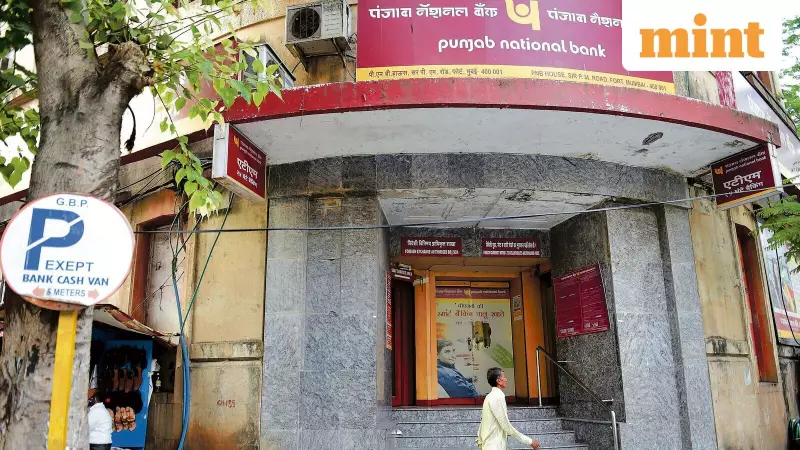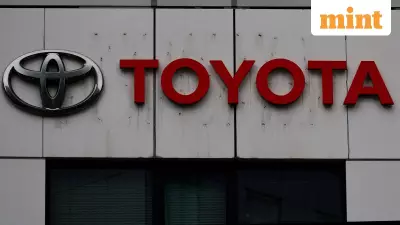
India's banking sector is witnessing a remarkable financial paradox that has left market observers both surprised and impressed. While foreign direct investment pours into private banks, public sector banks have orchestrated an extraordinary turnaround, with their index skyrocketing nearly 500% over five years, dramatically outperforming the Bank Nifty.
The Foreign Investment Floodgates Open
Global marquee investors are demonstrating unprecedented confidence in India's banking sector through substantial, long-term capital commitments rather than fleeting portfolio investments. Emirates NBD recently acquired a majority stake in RBL Bank for ₹26,850 crore, marking the largest foreign direct investment in Indian banking history.
This landmark deal follows closely behind other significant investments. Japan's Sumitomo Mitsui Banking Corporation secured a 24.2% stake in Yes Bank for ₹16,333 crore, while Blackstone invested ₹6,196 crore for a 9.9% position in Federal Bank. Earlier in April, Warburg Pincus and Abu Dhabi Investment Authority committed up to ₹7,500 crore for a combined 15% stake in IDFC First Bank.
Anil Rego, founder of Right Horizons PMS, explains this surge in global interest: "Several factors are converging to drive this renewed global interest. India's macroeconomic stability, robust GDP growth trajectory, and improving financial inclusion metrics are making the banking sector an attractive long-term play."
The Regulatory Winds Shift
The banking sector's transformation has been accelerated by significant policy changes from the Reserve Bank of India. After maintaining steady policy rates at 6.5% through much of 2024, the central bank has executed an aggressive easing cycle in 2025, cutting rates by 100 basis points—the fastest pace since the global financial crisis excluding pandemic years.
RBI Governor Sanjay Malhotra announced revolutionary measures, including a phased 100 basis point reduction in the cash reserve ratio that will inject approximately ₹2.5 trillion into the banking system by November 2025. The October policy meeting introduced an unprecedented 22 measures designed to boost credit growth, reduce funding costs, and improve operational efficiency.
These regulatory relaxations include reduced risk weights on bank lending to non-banking financial companies, higher limits on loans against securities, and revised risk weights on home and retail loans. Goldman Sachs analysts project that these supportive measures will lower banks' capital requirements and funding costs, expecting credit growth recovery from the second half of FY26.
PSU Banks: From Laggards to Leaders
The most dramatic story unfolds in the public sector banking space. While the Bank Nifty gained 115% and Nifty 50 advanced 108% over five years, the Nifty PSU Bank index exploded with a nearly 500% surge, marking one of the most remarkable turnarounds in Indian financial history.
This reversal began with the RBI's asset quality review a decade ago, followed by prompt corrective action frameworks and a wave of consolidation starting in 2017. The number of public sector banks reduced from 27 to 12 through strategic mergers, including State Bank of India's integration of five associate banks and Bharatiya Mahila Bank.
The operational improvements have been staggering. PSU banks transformed from an aggregate loss of ₹26,000 crore in FY20 to a profit of ₹1.4 trillion in FY24, swelling further to ₹1.7 trillion in FY25. They clawed back 40 basis points of credit market share in FY25, reaching nearly 58% overall.
For the first time in 15 years, PSU banks outpaced private banks in loan growth (12% versus 10%), driven by retail and MSME portfolios with lower exposure to unsecured lending. Asset quality improved dramatically, with gross NPAs dropping from double-digit levels to 2.8% in FY25.
The Merger Mystery Unfolds
The recent spike in trading volumes for Union Bank of India, Canara Bank, and Bank of Maharashtra has fueled speculation about another wave of consolidation. Market experts believe the conditions are ripe for further restructuring in the public sector banking space.
Christy Mathai of Quantum AMC observes: "There is speculation of consolidation of some of the smaller public sector banks into the larger ones. We believe this is positive as smaller PSU banks suffer from relatively poor operating metrics, and any consolidation may lead to more focused growth and advantage of scale."
The government appears to be laying the groundwork for transformative changes. The appointments committee recently opened top management roles in public sector banks to private-sector candidates, while Finance Minister Nirmala Sitharaman reiterated the need for large, world-class banks in India. Reports suggest the government is considering raising the FDI limit in PSU banks from 20% to 49% to attract more capital.
Anil Rego adds: "The earlier 2020–21 mergers have already delivered benefits such as stronger balance sheets, higher profitability, and improved cost synergies. With PSU banks now demonstrating normalized RoAs of ~1% and asset quality on par with private peers, the timing appears conducive for another phase of reform-led consolidation."
As public sector banks demonstrate cleaner balance sheets, robust asset quality, and record profitability, they stand poised for another phase of rerating and wealth creation. The combination of foreign investment interest, supportive regulatory policies, and potential consolidation creates a powerful narrative for continued growth in India's transformed banking landscape.





